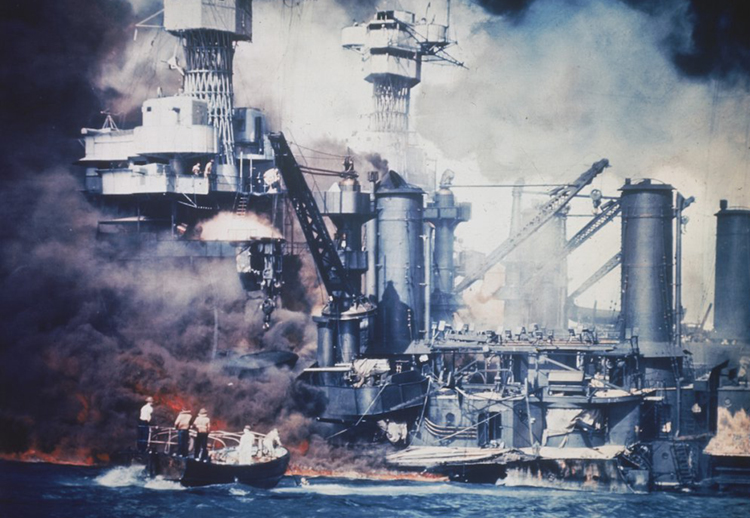Current Events Lesson Plan: December 1-7, 2016
Current Event: Pearl Harbor: 75 Years After
Wednesday, December 7, marked the 75th anniversary of the Japanese surprise attack on the U.S. naval base at Pearl Harbor, Hawaii. Thousands of people have attended events that began last week at Pearl Harbor, capped on Wednesday by the headline ceremony at Kilo Pier attended by survivors of the attack and a number of dignitaries. Wednesday’s events also included the laying of a wreath at the Marine Corps Base Hawaii, the ringing of the Freedom Bell at the USS Bowfin Submarine Museum & Park, a band performance at the Battleship Missouri Memorial, a four-team college basketball tournament, ceremonies at the USS Oklahoma Memorial on Ford Island, and ceremonies at Schofield Barracks and Wheeler Army Airfield honoring the U.S. Army and its 25th Infantry Division. A private interment ceremony took place at the USS Arizona Memorial, where the ashes of two Arizona survivors who recently passed away were buried with their comrades who died in the ship 75 years ago. On the morning of Dec. 7, 1941, the Japanese launched a surprise attack on the U.S. Pacific Fleet at Pearl Harbor. Two waves of Japanese warplanes sank several U.S. ships, including four battleships. They also destroyed more than 180 U.S. aircraft. The Japanese killed 2,400 Americans but lost only about 100 of their own troops. The attack was a success for Japan at the time. But bringing the United States into the war proved disastrous for Japan and its citizens.

The attack on Pearl Harbor by Japanese bombers was a key event in U.S. history. Following the Dec. 7, 1941, attack on the U.S. naval base, the United States declared war on Japan and formally entered World War II (1939-1945). Credit: © AP Photo
Objective:
World War II (1939-1945) was the most destructive war in history. It killed more people, destroyed more property, and disrupted more lives than any other war in history. Historians believe that about 50 million to 60 million civilians and soldiers died during the six years of fighting. As a result of the war, much of Europe and parts of Asia lay in ruins. In addition to the tens of millions of people who died, millions more were left starving and homeless. The war brought about the downfall of Western Europe as the center of world power. It led to the dominance of the Soviet Union and the United States, and set off a power struggle between the two countries called the Cold War. The Behind the Headlines news story and related World Book articles explore the people and battles of World War II.
Words to know:
- Arizona
- Hawaii
- Joint Base Pearl Harbor-Hickam
- Miller, Dorie
- Missouri
- Pearl Harbor
- World War II
- Yamamoto, Isoroku
Discussion Topics:
1. Ask your students what they know about Hawaii. (Students might say that Hawaii is near the middle of the North Pacific Ocean, Honolulu is the state’s capital and largest city, the island of Hawaii is the state’s largest island and Oahu is the most populous island, Hawaii became the 50th state in 1959, many Hawaiians are of Polynesian descent.)
2. Ask your students to name military and political leaders of World War II. (Famous military leaders include Dwight D. Eisenhower, Douglas MacArthur, Bernard Montgomery, George S. Patton, and Erwin Rommel. Famous political leaders include Winston Churchill, Hirohito, Adolf Hitler, Benito Mussolini, Franklin D. Roosevelt, and Joseph Stalin.)
3. Have your students debate, “How would the world be different today if World War II had never been fought?” Or they can debate, “How would the world be different today if the Axis countries had won World War II?”
4. Ask your students to use World Book’s Timelines feature to view or add to the World War II: Asia and the Pacific timeline. (Students may wish to use World Book’s “World War II” article for help.)


